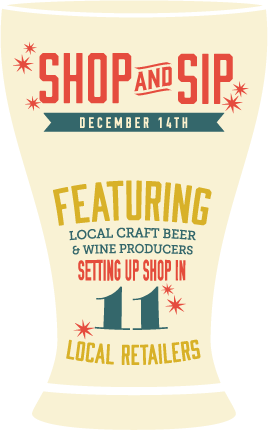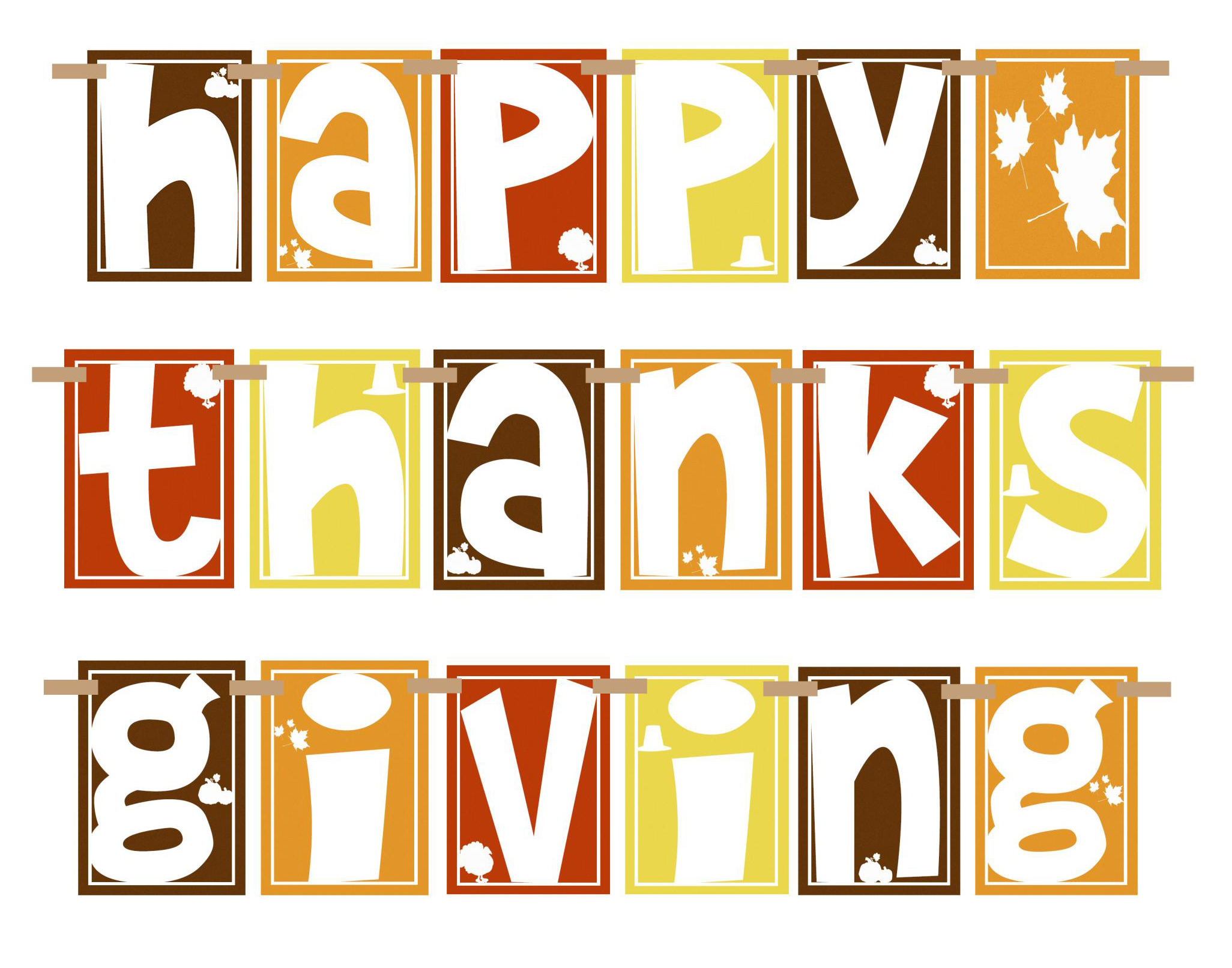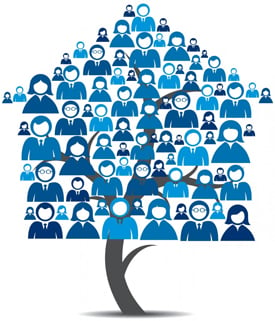Thanksgiving is almost upon us—but how much do you know about America's favorite day to eat turkey?
Here's the lowdown on Thanksgiving history, holiday travel, football, feasting, and more.
Thanksgiving Dinner: Recipe for Food Coma?
Key to any Thanksgiving Day menu are a fat turkey and cranberry sauce.
An estimated 254 million turkeys were raised for slaughter in the U.S. during 2012, up 2 percent from 2011's total, according to the U.S. Department of Agriculture's National Agricultural Statistics Service.
About 46 million of those turkeys ended up on U.S. dinner tables last Thanksgiving—or about 736 million pounds (334 million kilograms) of turkey meat, according to estimates from the National Turkey Federation.
Minnesota is the United States' top turkey-producing state, followed by North Carolina, Arkansas, Missouri, Virginia, Indiana, and California. These "big seven" states produce more than two of every three U.S.-raised birds, according to U.S. Census Bureau data.
U.S. farmers also produced an estimated 768 million pounds (348 million kilograms) of cranberries in 2012, which, like turkeys, are native to the Americas. The top producers are Wisconsin and Massachusetts.
The U.S. grew 2.6 billion pounds (1.18 billion kilograms) of sweet potatoes—many in North Carolina, Mississippi, California, and Louisiana—and produced more than 1.2 billion pounds (544 million kilograms) of pumpkins. Illinois, California, Pennsylvania, and Ohio grow the most U.S. pumpkins.
In some homes, 2013's festivities will feature these traditional ingredients in some truly unusual recipes, thanks to the once-in-a-lifetime convergence of Thanksgiving and Hanukkah popularly dubbed "Thanksgivukkah."
But if you overeat at Thanksgiving dinner, there's a price to be paid for all this plenty: the Thanksgiving "food coma." The post-meal fatigue may be real, but the condition is giving turkeys a bad rap.
Contrary to myth, the amount of the amino acid tryptophan in most turkeys isn't responsible for drowsiness.
Instead, scientists blame booze, the sheer caloric size of an average feast, or just plain-old relaxing after stressful work schedules. (Take a Thanksgiving quiz.)
First Thanksgiving Menu—Pass the Passenger Pigeon?
Little is known about the first Thanksgiving dinner in Plimoth (also spelled Plymouth) Colony in October 1621, attended by some 50 English colonists and about 90 Wampanoag Native American men in what is now Massachusetts.
"We don't have a lot of information about what was actually on that table," said Kathleen Wall, culinarian at Plimoth Plantation.
We do know that the Wampanoag killed five deer for the feast, and that the colonists shot various types of wild fowl such as turkey, geese, ducks, quail, or passenger pigeons—which darkened the skies in the millions before going extinct a century ago. Some form, or forms, of Indian corn were also served. "This maize was a new product for them, and they were just learning how to use it," Wall explained. "They cooked it into porridges much like modern grits."
Wall said the feasters ate seasonally and likely supplemented their venison and birds with fish, mussels, eels, shorebirds, and nuts, as well as vegetables such as pumpkins, squash, carrots, and peas.
Like many modern holidaymakers confronting a groaning sideboard, the pilgrims were surprised by the amount and variety of food confronting them.
"Almost everyone who came to New England and wrote back [home] talked about the abundance," Wall said. "Everyone wrote about how rich the country was with fish, fowl, and deer. And the English brought things from their own gardens as well so they could supply themselves for ten months here in New England."
But much of what we consider traditional Thanksgiving fare was unknown at the first Thanksgiving. Potatoes and sweet potatoes hadn't yet become staples of the English diet, for example. And cranberry sauce requires sugar—an expensive delicacy in the 1600s. Likewise, pumpkin pie was missing—the first English recipe for the dish doesn't appear until 1654, Wall said.
If you want to eat like a Pilgrim yourself, try some of the Plimoth Plantation's recipes, including stewed pompion (pumpkin) or traditional Wampanoag turkey stew, or check out the inside of a 17th-century kitchen on the plantation's Pilgrim foodie blog Pilgrim Seasonings. (Related: "16 Indian Innovations: From Popcorn to Parkas.")
First Thanksgiving Not a True Thanksgiving?
Long before the first Thanksgiving, American Indians, Europeans, and people from other cultures around the world had often celebrated the harvest season with feasts to offer thanks to higher powers for their sustenance and survival.
In 1541 Spaniard Francisco Vásquez de Coronado and his troops celebrated a "Thanksgiving" while searching for New World gold in what's now the Texas Panhandle.
Later such feasts were held by French Huguenot colonists in present-day Jacksonville, Florida (1564); by English colonists and Abenaki Indians at Maine's Kennebec River (1607); and in Jamestown, Virginia (1610), when the arrival of a food-laden ship ended a brutal famine. (Related:"400-Year-Old Seeds, Spear Change Perceptions of Jamestown Colony.")
But it's the 1621 Plimoth Thanksgiving that's linked to the birth of our modern holiday. To tell the truth, though, the first "real" Thanksgiving happened two centuries later.
Everything we know about the three-day Plimoth gathering comes from a description in a letter written in 1621 by Edward Winslow, leader of the Plimoth Colony. The letter had been lost for 200 years and was rediscovered in the 1800s.
In 1841 Boston publisher Alexander Young printed Winslow's brief account of the feast and added his own twist, dubbing the 1621 feast the "First Thanksgiving," though the letter describes a one-time event that was more harvest celebration than thanksgiving, which in the 17th century would have actually included fasting.
But after its mid-1800s appearance, Young's designation caught on—to say the least. U.S. President Abraham Lincoln declared Thanksgiving Day a national holiday in 1863. He was probably swayed in part by magazine editor Sarah Josepha Hale—the author of the nursery rhyme "Mary Had a Little Lamb"—who had suggested Thanksgiving become a holiday, historians say.
In 1941 President Franklin Roosevelt established the current date for observance, the fourth Thursday in November.
Thanksgiving Turkey-in-Waiting
Each year at least two lucky turkeys avoid the dinner table, thanks to a presidential pardon—a long-standing Washington tradition of uncertain origin.
Since 1947, during the Truman Administration, the National Turkey Federation has presented two live turkeys—and a ready-to-eat turkey—to the president, federation spokesperson Sherrie Rosenblatt said in 2009.
"There are two birds," Rosenblatt explained, "the presidential turkey and the vice presidential turkey, which is an alternate, in case the presidential turkey is unable to perform its duties."
Those duties pretty much boil down to not biting the president during the photo opportunity with the press.
The lucky birds once shared a happy fate similar to that of Super Bowl-winning quarterbacks—a trip to Disneyland's Big Thunder Ranch in California, where they lived out their natural lives. Today the 40-pound (18-kilogram) toms enjoy Christmas at George Washington's Mount Vernon Estate and Gardens, then move to a permanent home at Morven Park in Leesburg, Virginia.
Talking Turkey
Pilgrims had been familiar with turkeys before they landed in the Americas. That's because early European explorers of the New World had returned to Europe with turkeys in tow after encountering them at Native American settlements. Native Americans had domesticated the birds centuries before European contact.
A century later Ben Franklin famously made known his preference that the turkey, rather than the bald eagle, should be the official U.S. bird, explaining in a letter to his daughter that it was "a much more respectable Bird, and withal a true original Native of America."
But Franklin might have been shocked when, by the 1930s, hunting had so decimated North American wild turkey populations that their numbers had dwindled to the tens of thousands, from a peak of at least tens of millions.
Today, thanks to hunting regulations and reintroduction efforts, "rafters" and "gangs" (never "flocks") of wild turkeys are back in abundance. (Watch a video of wild turkeys.)
Some seven million wild turkeys are thriving across the U.S., and many of them have adapted easily to the suburbs—their speed presumably an asset on ever encroaching roads.
Wild turkeys can run some 10 to 20 miles (16 to 32 kilometers) an hour and fly in bursts at 55 miles (89 kilometers) an hour. Domesticated turkeys can't fly at all.
When they're not being the center of a Thanksgiving feast, turkeys enjoy quite a diverse spread themselves. The omnivore birds eat everything from nuts and berries to insects and snakes.
Turkeys digest this diet with what becomes a prize portion for many a human feast—the gizzard. The gizzard is the muscle that enables turkeys to crush and chew their food, helped along by small stones the birds swallow.
On Thanksgiving, Pass the Pigskin
During the Plimoth Thanksgiving—which was not one giant meal but three full days of feasting, Wall explained—sporting events were part of the celebration. Target shooting figured prominently among the male-dominated crowd. And teams took to the field to compete in stool ball. "There are several different versions" of stool ball, Wall explained, "but it's kind of a proto-cricket where teams throw a ball around and try to keep a stool safe."
The game has changed, but sports still take center stage for at least part of the modern holiday. For many U.S. citizens, Thanksgiving without football is as unthinkable as the Fourth of July without fireworks.
NBC Radio broadcast the first national Thanksgiving Day game in 1934, when the Detroit Lions hosted the Chicago Bears. Except for a respite during World War II, the Lions have played—usually badly—every Thanksgiving Day since.
For the 2013 game, the 74th, they will take on the Green Bay Packers.
Macy's Thanksgiving Day Parade
For a festive few, even turkey takes a backseat to the Macy's Thanksgiving Day Parade in New York City, originally called the Macy's Christmas Parade because it kicked off the shopping season. (Just published: "Animal-Rights Activists Take Air Out of Macy's Thanksgiving Parade.")
The tradition began in 1924 when employees recruited animals from the Central Park Zoo to march on Thanksgiving Day. Helium-filled balloons made their debut in the parade in 1927 and, in the early years, were released above the city skyline with the promise of rewards for their finders.
The Macy's Thanksgiving Day Parade, first televised nationally in 1947, now draws some 44 million viewers—not counting the three million people who actually line the 2.5-mile (4-kilometer) Manhattan route.
Thanksgiving weekend also boasts the retail version of the Super Bowl—Black Friday, when massive sales and early opening times attract frugal shoppers.
A National Retail Federation (NRF) survey projects that up to 140 million Americans will either brave the crowds to shop on 2013's Black Friday weekend or take advantage of online sales, continuing a two-year downward dip from 2011's 152 million shoppers.
This year, for the first time, the NRF asked those planning to shop if they'll do so on Thanksgiving Day itself. Much to the chagrin of many retail employees, nearly one-quarter of them said yes.
Online shoppers have their own red-letter day on the Monday after Thanksgiving. Cyber Monday was officially introduced in 2005 by the NRF because retailers noticed that bargain chasers were taking to online shopping venues in large numbers on that day. In 2012 approximately 129 million people opened their wallets on Cyber Monday.
Planes, Trains, and (Lots of) Automobiles
It may seem like everyone in the U.S. is on the road on Thanksgiving Day, keeping you from your turkey and stuffing.
That's not exactly true, but almost 39 million of about 317 million U.S. citizens will drive more than 50 miles (80 kilometers) from home for the 2013 holiday, according to the American Automobile Association. That's a 1.5 percent decline from last year.
"For those traveling, the good news is motorists will receive a holiday bonus in the form of lower gas prices, which are at their lowest levels for the holiday since 2010," AAA Chief Operating Officer Marshall L. Doney said in a statement.
Most states will have stations selling gas for under $3 a gallon, AAA added.
An additional 3.14 million travelers will fly to their holiday destinations, and 1.4 million others will use buses, trains, or other modes of travel.
Wondering what day would be best to stay at home? Wednesday figures to be the busiest day for all modes of travel. The AAA survey found that 37 percent of travelers are planning to begin their trips Wednesday and most (33 percent) will return home on Sunday.
An additional 24 percent, however, will stretch their holiday weekend into Monday, December 2, or beyond. The average Thanksgiving road trip for 2013 clocks in at just over 600 miles (966 kilometers).
Thanksgiving North of the Border
Cross-border travelers can celebrate Thanksgiving twice, because Canada celebrates its own Thanksgiving Day the second Monday in October.
As in the U.S., the event is sometimes linked to a historic giving of thanks with which it has no real ties—in this case, a ceremony held in 1578 by explorer Martin Frobisher and his crew in gratitude for their safe landing in what is now New Brunswick.
Canada's Thanksgiving, established in 1879, was inspired by the U.S. holiday.
Dates of observance have fluctuated—sometimes coinciding with the U.S. Thanksgiving or the Canadian veteran-appreciation holiday, Remembrance Day—and at least once Canada's Thanksgiving occurred as late as December.
But Canada's colder climate eventually led to the 1957 decision that formalized the October date.
 on December 10, 2013 in For Buyers
on December 10, 2013 in For Buyers Facebook
Facebook
 X
X
 Pinterest
Pinterest
 Copy Link
Copy Link
 In today’s competitive real estate market, sometimes the standard, run-of-the-mill open houses aren’t yielding much success, and some sellers are choosing an alternative and effective method, that has been dubbed, “extreme open houses.”
In today’s competitive real estate market, sometimes the standard, run-of-the-mill open houses aren’t yielding much success, and some sellers are choosing an alternative and effective method, that has been dubbed, “extreme open houses.”



 Many sellers feel that the spring is the best time to place their home on the market as buyer demand increases at that time of year. However, the fall and winter have their own advantages. Here are five reasons to sell now.
Many sellers feel that the spring is the best time to place their home on the market as buyer demand increases at that time of year. However, the fall and winter have their own advantages. Here are five reasons to sell now. Today, many real estate conversations center on housing prices and where they may be headed. That is why we like theHome Price Expectation Survey. Every quarter, Pulsenomics surveys a nationwide panel of over one hundred economists, real estate experts and investment & market strategists about where prices are headed over the next five years. They then average the projections of all 100+ experts into a single number.
Today, many real estate conversations center on housing prices and where they may be headed. That is why we like theHome Price Expectation Survey. Every quarter, Pulsenomics surveys a nationwide panel of over one hundred economists, real estate experts and investment & market strategists about where prices are headed over the next five years. They then average the projections of all 100+ experts into a single number.
